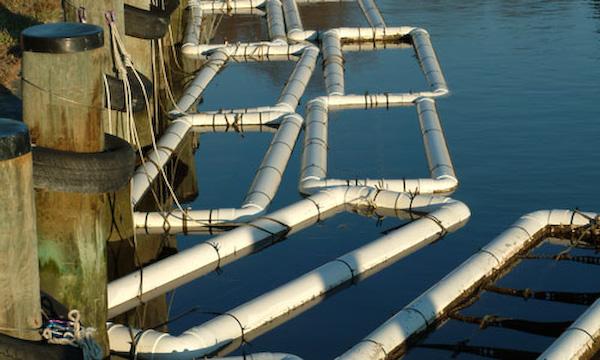
Kelp is a healthy and nutritious sea vegetable that is high in fiber, vitamins, and minerals, including vitamin C, vitamin K, iron, calcium, iodine, and magnesium. Kelp has long been part of the diet of Asian cultures, and, in fact, Saccharina japonica (a relative of our native Saccharina latissima) is the number one aquacultured species worldwide by weight. Although the majority of kelp marketed in the US is harvested from the wild, the development of a kelp culture industry, which can help supplement wild stocks as demand increases, is currently underway . A versatile vegetable, it can be used dried, powdered, fresh, cooked, and frozen. Currently available in health food stores kelp is sold as a dried or frozen vegetable, in powder, flake or pill form, and as a component in soup and snack foods. Alginate, or alginic acid, is a polysaccharide found in the cell walls of brown algae. The alginate in whole kelp can absorb and remove heavy metal and radioactive ions from their environment, and there has been some indication that it can also assist in weight loss due to its water absorption properties. Kelp contains a gel-forming phycocolloid that is extracted and used as an additive in the food processing industry for bulking, stabilizing, and smoothing food products. Non-food uses of kelp include utilization of alginate in the textile, manufacturing, laboratory and biomedical industries, and as a nutritional supplement in animal feed. Kelp has also been considered as a source of biomass for the production of biofuel for an alternative energy source.
The Kelp are large brown algae of the order Laminariales, from the Latin word ‘lamina”, which means “thin sheet”. This order contains several commercially important species within seven different families. Kelp can be found in cold to temperate climates worldwide and have a fall-to-spring growing season. Kelp have unique physiological properties that allow them to survive under ice, in near-darkness, and in high-energy environments, making them a valuable natural resource. The increasing demand for kelp and kelp products makes these species excellent candidates for aquaculture, especially because they contribute significantly to the health of marine environments.
Cultivation
All kelp have the same basic life cycle and can be cultivated using similar techniques. The life cycle is made up of two phases— a microscopic phase, and a large, conspicuous phase that can form large underwater forests with individuals growing up to 5 meters in length. Reproduction occurs when reproductive sorus tissue of adults release microspores, which settle and develop into separate microscopic male and female gametophytes. The gametophytes then reproduce to form juvenile sporophytes or spores which grow into adult kelp. In culture methods, spores from reproductive sorus tissue are ‘seeded’ onto string in the laboratory and grown into gametophytes. The gametophytes are maintained under controlled conditions until they form juvenile sporophytes. The sporophytes or ‘seed string’ are then planted out in the sea, on submerged horizontal long lines, during the fall to spring seasons.

